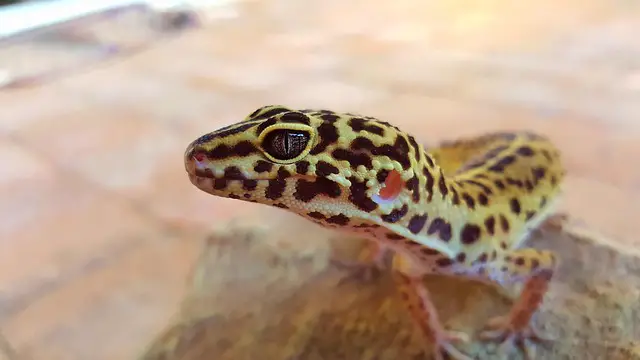The Leopard Gecko, one of the most commonly owned reptiles in America, bears a striking resemblance to the leopard, with its spotted body the aesthetic is interesting and wonderful to look at, which is probably a big reason for their popularity. If you’re looking to purchase a Leopard Gecko, what substrate is safe?
Excavator clay is perfectly suitable for a Leopard Gecko. In fact, it almost perfectly mimics their natural habitat and offers several advantages that make the life of your Leopard Gecko a whole lot easier.
In order to properly imitate a Leopard Gecko’s natural habitat, the excavator clay has to be hardened, as Leopard Geckos come from semi-desert areas of the world, where they are used to the shade of caves to help shield them from the extreme temperatures of the desert.
What is Excavator Clay?
There are a ton of substrates that are more than adequate for your Leopard Gecko’s real estate and excavator clay is just one of them. It does have several advantages, however, which make it a worthwhile substrate for a gecko to live on.
In fact, excavator clay is considered to be one of the best substrates available for Leopard Geckos, as they need a substrate in which they can burrow, and excavator clay is not so dense that it will damage a gecko’s toes and it holds its shape as the Leopard Geckos carves out tunnels.
- Holds its shape
- Loose enough for burrowing
- Natural and safe
- Relatively comfortable
- Makes clean up easier
Excavator clay is known to be a safe and natural substrate for geckos, however, you may want to add something in addition to it, such as coconut fibers for bedding. While excavator clay is comfortable enough to move around on, it is only “comfortable enough,” not the best leisure material for your Leopard Gecko.
It also makes cleaning up very easy. A Leopard Gecko’s droppings would necessitate removing entire chunks of fiber bedding, while excavator clay makes it easy enough to just vacuum right off of the surface with a shop vac.
Since it holds its shape relatively well, your Leopard Gecko is free to excavate until its heart is content, building its own home above and within the excavator clay. IT gives your Leopard Gecko plenty of exercise and a feeling of home.
It does have to be misted from time to time, or it will lose its malleability and become more like loose, dry dirt, which is the opposite of what you want to happen. Plus, Leopard Geckos need a bit of humidity when it comes to shedding their skin.
So routinely spraying the excavator clay down with a fine mist will provide it with the humidity it needs to shed.
How Long Does Excavator Clay Last?
Excavator clay, once hardened, can last for years without much in the way of maintenance. It’s not only a great substrate for your Leopard Gecko, but it’s also fun to play with and mold into housing structures that you can place around your Leopard Gecko’s home.
You’ll make a heck of a mess, but it’s generally good fun to mold several burrows of your own design for your Leopard Geckos to explore. You can also fill some of them with bedding, like the aforementioned coconut fibers, so they have a good place to bed down for the evening.
You can use excavator clay to smooth out a curvy but mostly flat landscape that mimics a Leopard Gecko’s natural environment. Once you have the substrate laid out, you can start creating all manner of burrows.
You can also create hollow points along the flat surface that are fairly large and fit your hand-molded clay designs into them, making both your design and the substrate look more natural as if it were pulled straight from the desert.
Whichever way you decide to go, it’s up to you and your willingness to be creative. The final result will not only be entertaining, but it will also be a permanent home for your Leopard Gecko that will last for years.
If you want, you can even invest in a cavern kit that makes the whole thing more entertaining.
Can Excavator Clay Cause Impaction?
Excavator clay doesn’t come with any risks for impaction. One of the primary concerns with buying substrate is whether or not it will cause impaction in your reptiles. Impaction is defined as intestinal damage caused by consuming dirt.
Considering the material that excavator clay is composed of, it would be very difficult for your Leopard Gecko to ingest or get it mixed up in their food and accidentally ingested. There are dangers of impaction with other substrates, some of them particular to certain types of reptiles, but not so with excavator clay.
However, it is important to keep some level of light moisture on your excavator clay. It’s not known for causing impaction when dried and broken up but it’s always best to remain on the safe side and keep it moist.
Besides, allowing it to dry kind of defeats the entire purpose of having an excavator clay substrate, to begin with.
Final Thoughts
Not only is excavator clay an excellent substrate for Leopard Geckos, but it’s also fun to use and construct your own burrows.
Out of all of the available substrates on the market, excavator clay is one of the more creativity-enabled substrates available and you can use it to build a perfect and long-lasting home for your Leopard Gecko.




